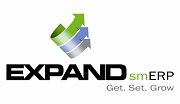Choosing
among the various ERP options can be a daunting task. With a large number of
vendors and options, businesses need to be careful and choose the system that
best suits them.
The right ERP program can boost the organization’s
productivity, lower operating costs and set the company on a path of growth.
The
plethora of options available need to be carefully assessed to decide on the
most suitable system for their needs. The following are some key aspects to
keep in mind when weighing your choices:
Have a specific, concrete list of requirement
Have a specific, concrete list of requirement
The
foremost task for businesses should be to list out their requirements of the
ERP system. The enterprise should pinpoint the current challenges and issues it
faces, and how it expects the ERP system to solve it.
The
company should identify the specific business processes and key functions
required. If the organization already has a system in place and is looking for
a new system to match its needs, it should identify the key issues and problems
of the current program and voice their concerns to the ERP vendors.
Optimally,
companies should opt for ERP programs that address the industry specific needs.
Having an extensive ERP system where the majority of the components are not
used by the organization is a waste of organizational resources. The
functionalities required by the business need to be specified in advance to
target the most suitable ERP providers.
Technological requirements and Compatibility
The companies must consider options that are compatible with
their business and resources at hand. It should note if the ERP program
requires additional hardware, servers and IT related investments. If the
company needs a system with their current technology it should opt for vendors
that cater to their specific need.
For instance, the majority of small and mid-sized enterprises
use computers that run on a Microsoft operating system, and frequently use
Word, Excel, Access etc. for business purposes. For these companies, a .NET ERP
program would be compatible with their current system and integrate well with
the existing framework.
Cost of ERP
and Payment Options
The company must consider the options that are within their
budget. The cost of implementing the ERP is an important consideration. Some
key questions would be whether the ERP deployment requires large upfront
payment or investment or does the vendor offer a pay-as-you-go, monthly or
yearly subscription option. Another issue to keep in mind if the cost of updating
the ERP when the subscription runs out. Businesses should choose programs that
are scalable and can be altered as needed to suit the needs of a growing
business.
Accessibility
and User-friendliness
Businesses must be clear on how much accessibility they want
to allow their users. Typically onsite ERP systems are very restricted in
nature and can only be accessed within the premises of the office. Cloud based
systems allow users to access the data from any part of the world using their
web browser. Businesses can choose between an onsite, cloud or a combination
ERP system.
A key aspect to consider is the user friendliness of the ERP
software. Would employees require extensive training to use the program or is
the ERP system intuitive and easy to use? The cost of training employees and
the additional time required must be considered. The highly competitive nature
of the current business environment requires the company data be accessible by
users through the computers, mobile devices and tablets. In order to maximize
the benefits of ERP and increase productivity companies should choose a program
that would be compatible with multiple devices and operating systems.
Implementation
and Customization
The organization must consider how long a particular ERP
system take to be successfully deployed and fully functional. The
implementation process and the time frame must be considered. Onsite ERP
programs take an average of 12 months to be implemented whereas cloud based
programs take approximately 3 to 6 months. Typically, the greater the
customization of the program, the longer the deployment period. Additionally a
highly customized program costs more, not only initially but each time when the
program is renewed and updated as well.
A highly customized system would address the need to the
enterprise better but would require more time to tailor, implement and cost
more. It would also take additional time whenever the program is renewed and
updated as the customisation have to be re-done. The companies need to strike
a balance between the additional benefits of a customized program and the
greater costs and time lags associated with it.
Vendor
reputation and Support
Often not discussed but an important matter nonetheless is
the vendor’s reputation. Is the vendor known to deliver upon his promises and
are former and current clients satisfied with the services provided? A business
may ask for references to clients in the same industry to obtain feedback about
the vendor’s product and services.
The services offered by the ERP provider are another
important aspect to consider. The enterprise needs to evaluate the support
system of the vendor and the promptness of the support staff in addressing and
rectifying issues that may arise with the ERP program.
A business must
carefully weigh all key aspects and optional before choosing an ERP solution.
It must be ensured that the system needs the requirements of the enterprise and
is well suited to the organizational objectives.Contributor - Vidushi


No comments:
Post a Comment
Thank you for your Comments.
ExpandERP Team